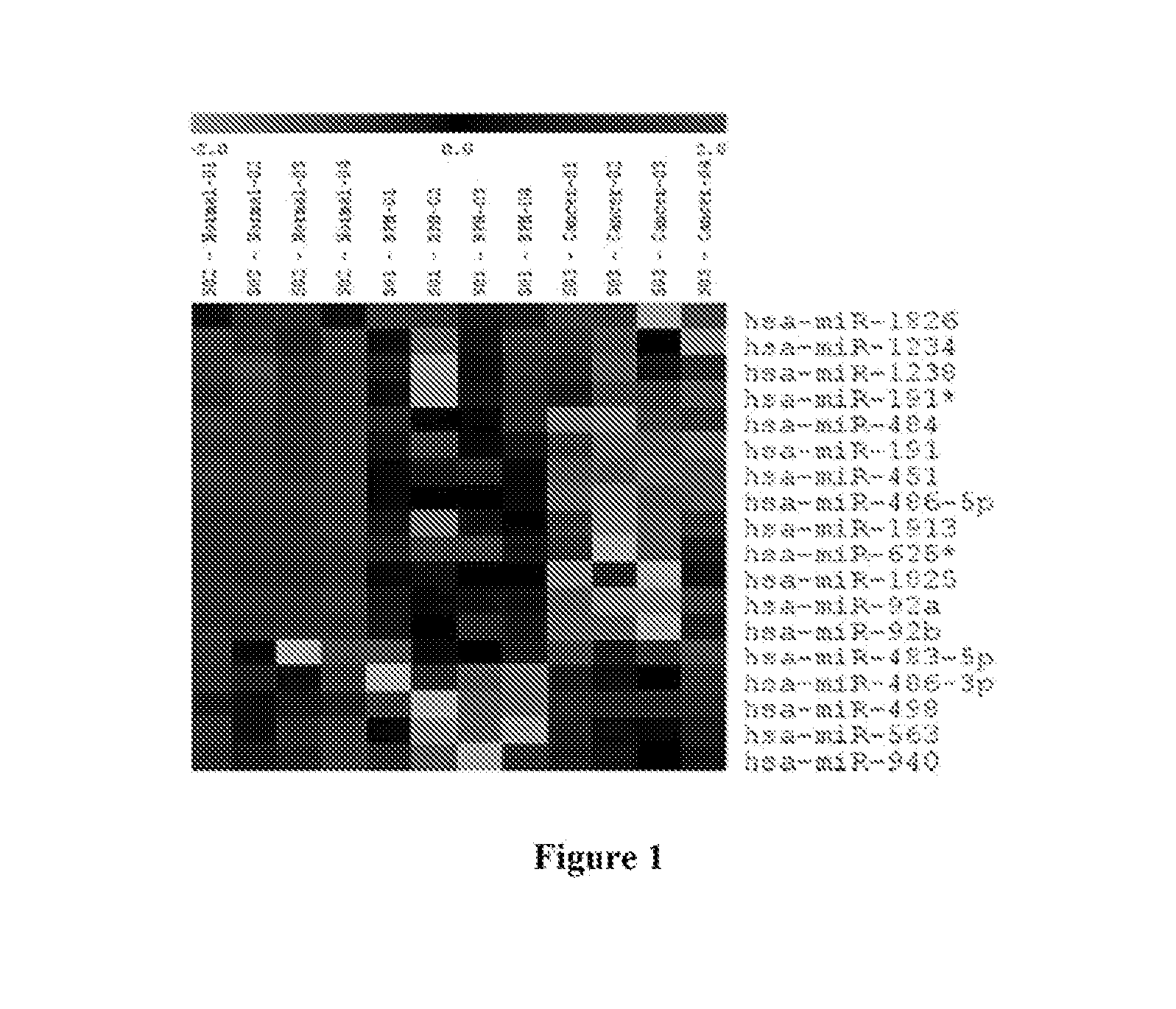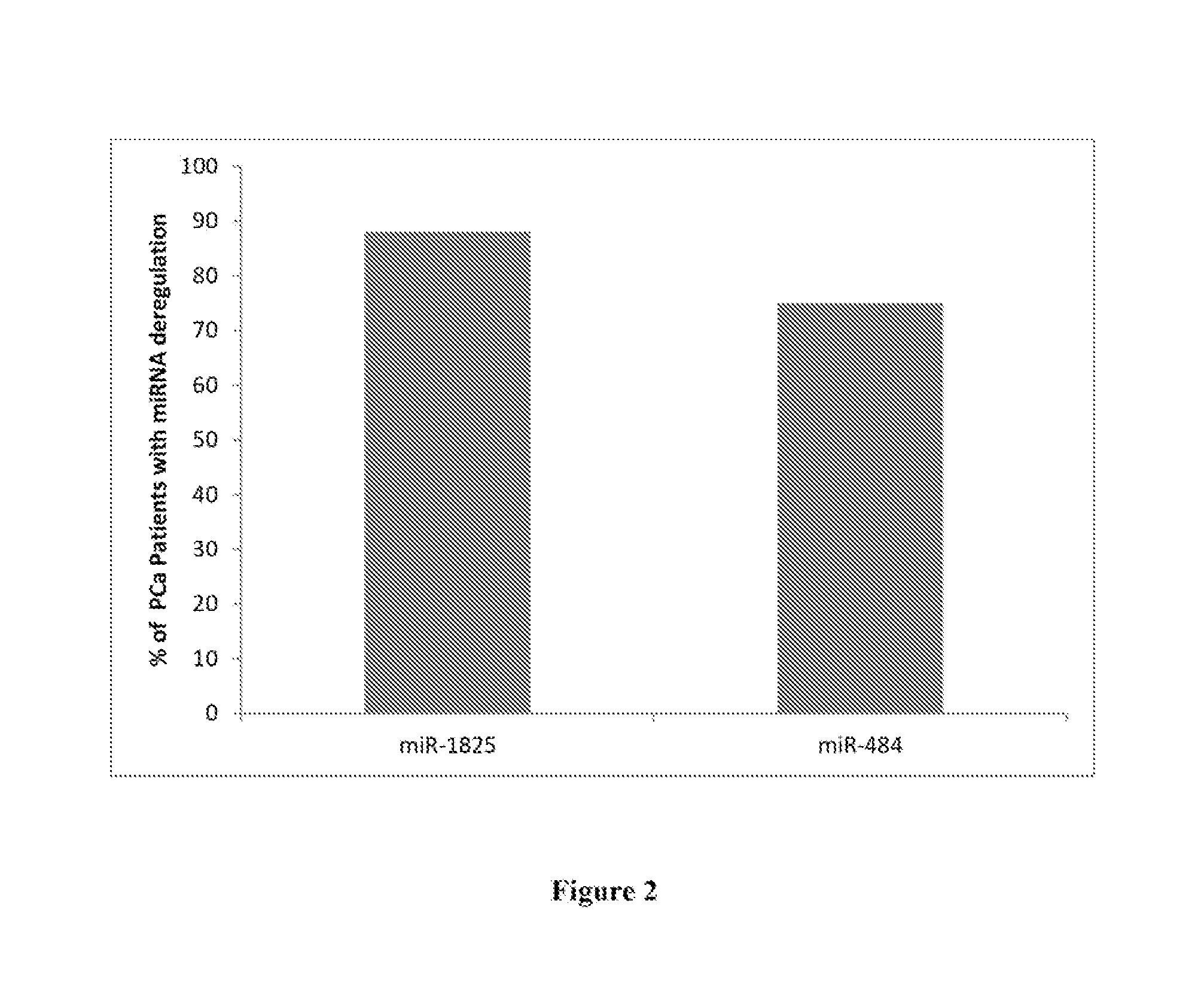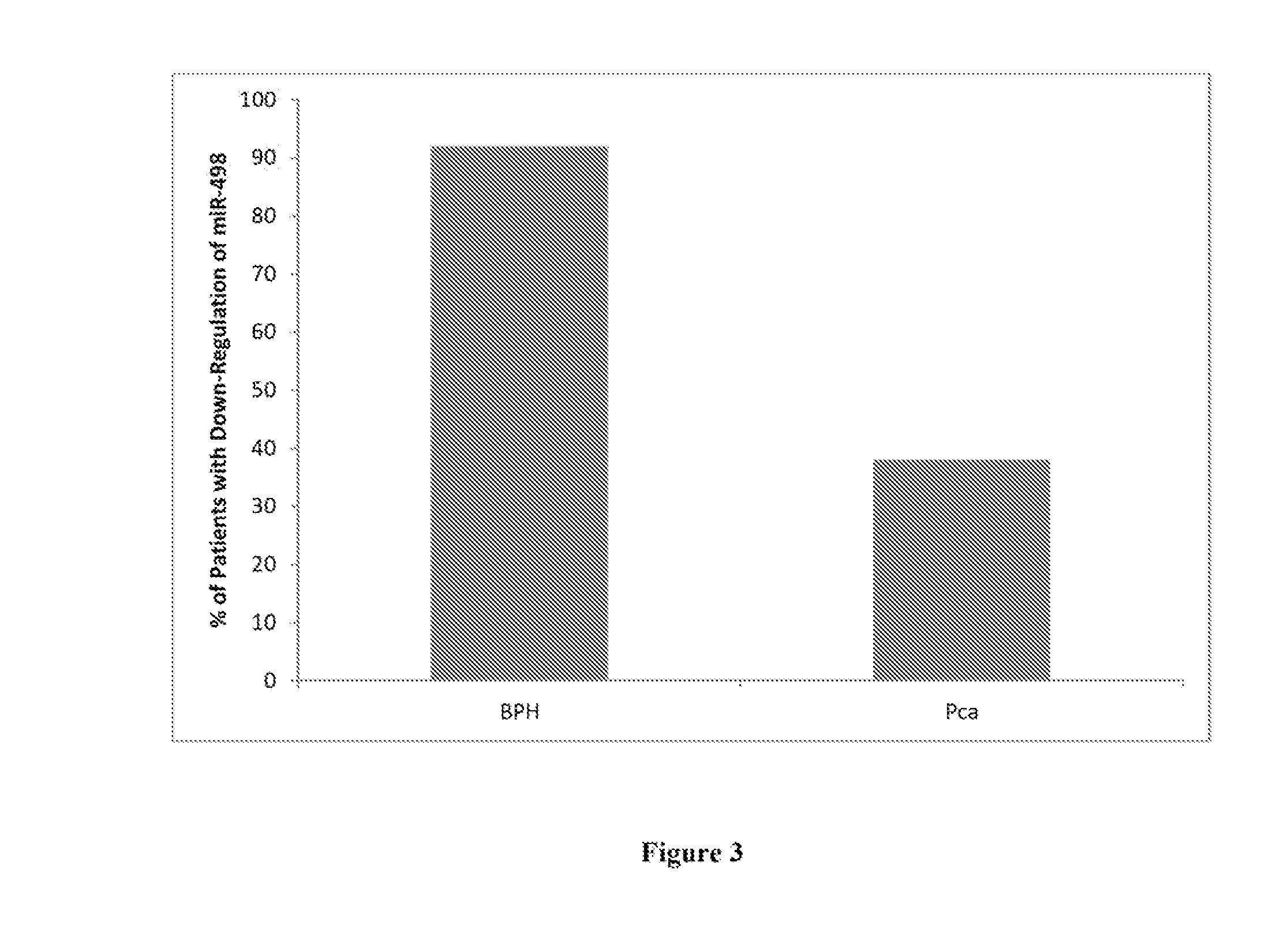Use of MicroRNAs for Screening and Diagnosis of Prostate Cancer and Benign Prostatic Hyperplasia
a prostate cancer and microrna technology, applied in the field of prostate cancer screening and diagnosis and benign prostatic hyperplasia, can solve the problems of false positive, pca testing has a notoriously poor specificity (33%), and the serum psa level is elevated
- Summary
- Abstract
- Description
- Claims
- Application Information
AI Technical Summary
Benefits of technology
Problems solved by technology
Method used
Image
Examples
example 2
Deregulation of miR-498 in Benign Prostatic Hyperplasia
[0036]Urine samples were collected from 29 Egyptian males. The samples were acquired from among three groups of individuals, each described by a questionnaire completed by the patients' attending physician. Overall, urine samples were collected from eight individuals diagnosed with Prostate Cancer (PCa), twelve individuals with Benign Prostatic Hyperplasia (BPH) and from ten healthy males (Healthy Control). Urine samples were collected into 50 mL Corning tubes containing Norgen's Urine Preservative Solution (Cat#18126) (Norgen Biotek, Thorold, ON, Canada). Urine samples were collected mid-stream in order to minimize first flow contamination. Total RNA was isolated from 2.5 mL of each urine sample using the Urine Total RNA Purification Maxi Kit (Slurry Format, Cat#29600; Norgen Biotek, Thorold, ON, Canada). Purified RNA from each sample within a group was then pooled, resulting in three pooled samples: PCa, BPH and Healthy Contro...
PUM
| Property | Measurement | Unit |
|---|---|---|
| Northern blot | aaaaa | aaaaa |
| Northern Blot | aaaaa | aaaaa |
| size | aaaaa | aaaaa |
Abstract
Description
Claims
Application Information
 Login to View More
Login to View More - R&D
- Intellectual Property
- Life Sciences
- Materials
- Tech Scout
- Unparalleled Data Quality
- Higher Quality Content
- 60% Fewer Hallucinations
Browse by: Latest US Patents, China's latest patents, Technical Efficacy Thesaurus, Application Domain, Technology Topic, Popular Technical Reports.
© 2025 PatSnap. All rights reserved.Legal|Privacy policy|Modern Slavery Act Transparency Statement|Sitemap|About US| Contact US: help@patsnap.com



